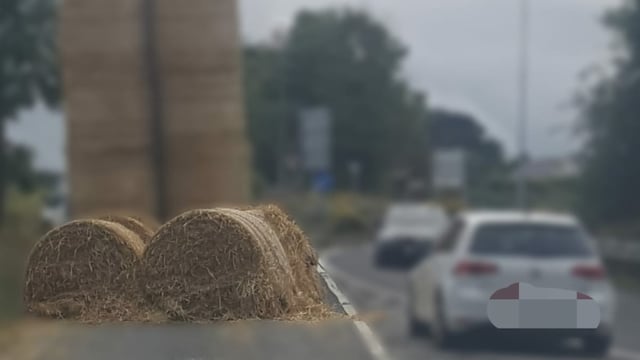Alternative forages could significantly boost dairy diets
Including alternative forages, such as maize, triticale, rye and wholecrop wheat, will act to fully complement the very lush, multi-cut grass silages now increasingly made in Northern Ireland.
Fane Valley’s Matthew Armstrong addressed this matter in detail at the recent Forage Farm Walk, hosted by the co-op on the Lisburn farm of Michael Drayne.
He said: “An alternative forage is classified as a secondary forage and includes the likes of wholecrop wheat and maize silage. These are secondary to grass silages.
“They add fibre to the forage mix that is made available to dairy cows, thereby improving overall ration performance.”
According to Armstrong, wholecrop wheat is the most popular alternative forage grown in Northern Ireland.
He continued: “Adding an alternative forage will act to boost overall dry matter intakes. The additional starch available in forages like wholecrop wheat, provides a further nutritional boost.
“Wholecrop wheat, for example, can contribute up to 40% of the total forage in a dairy cow ration.
The Fane Valley representative went on to point out that alternative forages should be fed to high yielding and fresh cows for the first 100 days of their lactation and/or until they are back in-calf again.
Armstrong continued: “Wholecrop wheat can yield between 12t and 14t/ac. It is best grown as part of a grassland rotation, paving the way for a grass reseed.
“Homegrown wholecrop wheat is costing up to £35/t fresh. If a contractor is brought in, this would add another £7/t to the overall growing costs."
Armstrong said that maize crops can yield up to 15t/ac. But north of Ardee maize remains a marginal crop to grow.
Where fodder beet is concerned, he confirmed that the crop can be grown successfully in Northern Ireland, adding:
“The inclusion of alternative forages in dairy cow diets will serve to increase total dry matter intakes.
“There is also very strong circumstantial evidence to show that the inclusion of alternative forages in dairy rations improves overall cow health and fertility."





